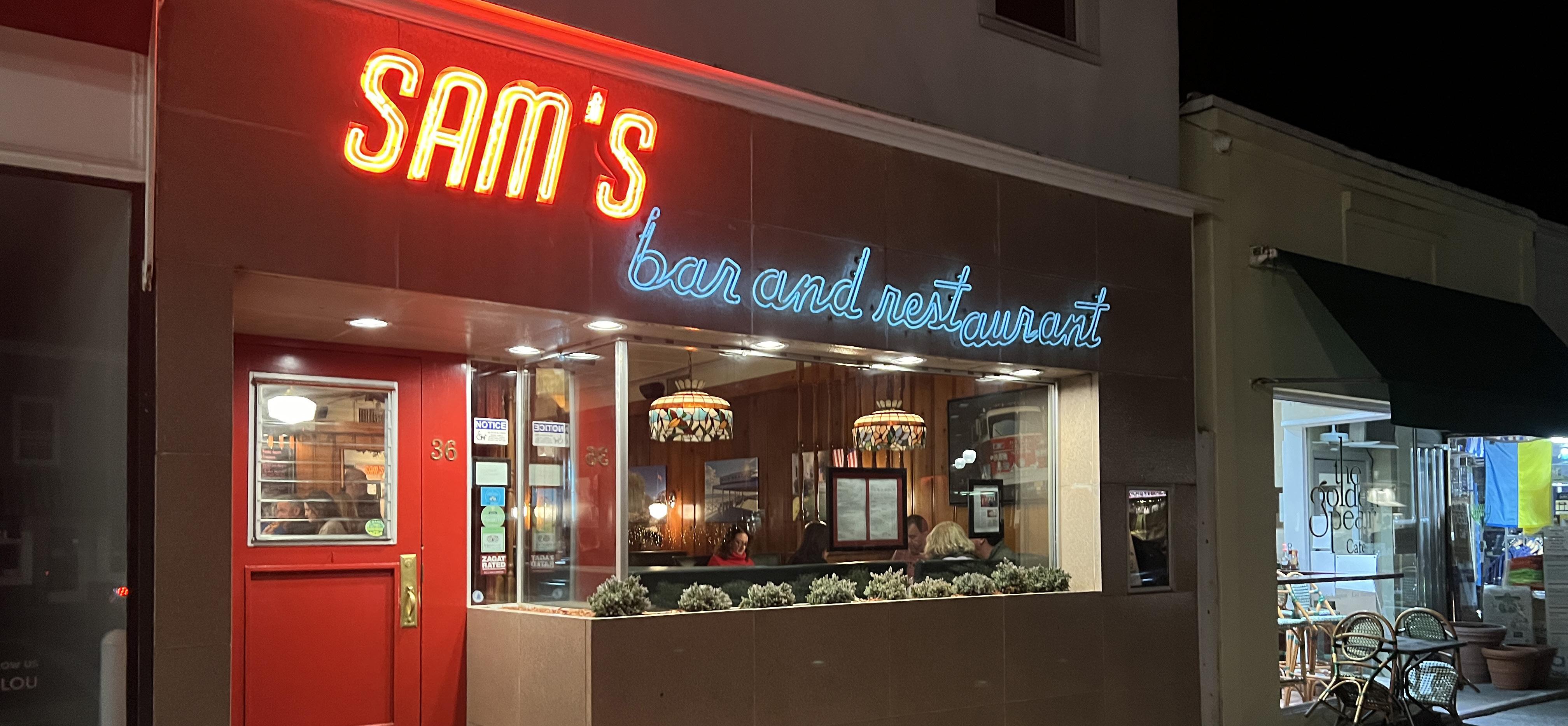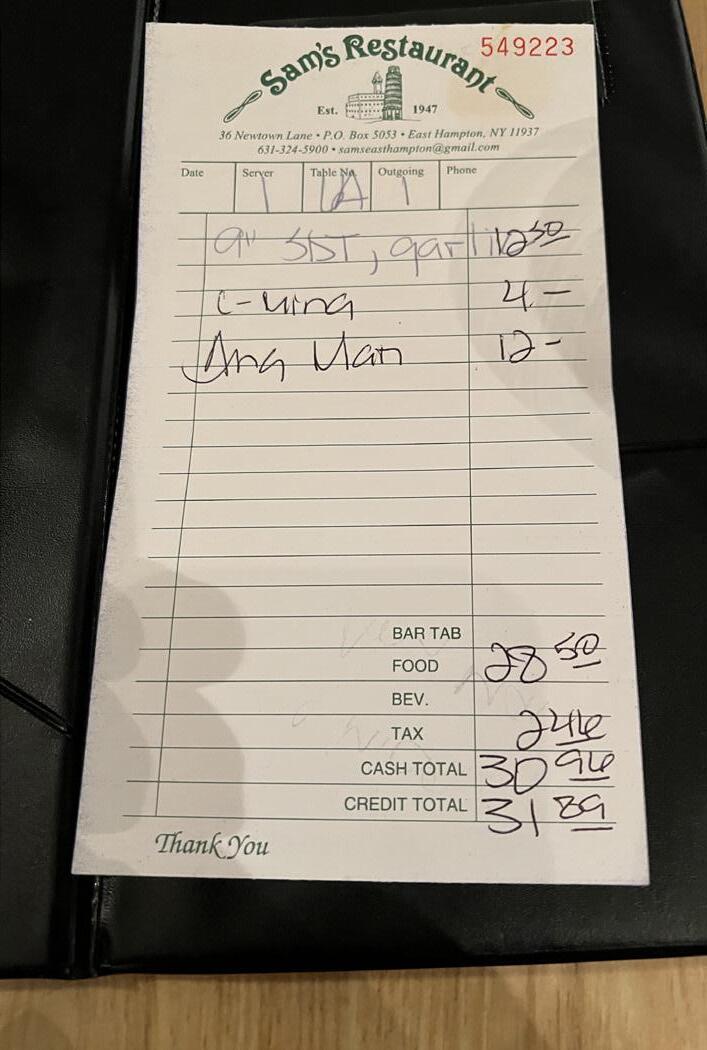STAR REVUE THE AMAGANSETT



Ah, April! For me, Spring means renewal, hope and BASEBALL. Last season is washed clean. Every team starts out in first place on opening day. Anything is possible. Well, almost…Cue the montage of calendar pages floating away, signaling a flashback: 2022, 2002, 1992, 1982, 1962
The Mets played their first two seasons at the Polo Grounds and on Sunday afternoons the Enright brothers attended many a doubleheader there. It only cost $1.50 for general admission, not a bad price for us to see two games that would live forever in baseball lore. In fact, Jimmy Breslin would immortalize the first one in his timeless monument to ineptitude, Can’t Anybody Here Play This Game. It was June 17, 1962, a doubleheader against Ernie (“Let’s Play Two Today!”) Banks and his Chicago Cubs. We knew it would be a very long day when Marvelous Marv Throneberry committed two errors in the top of the first, leading to four Cubs runs. That year Marv had one of the worst fielding percentages in history, to include other star systems.
But in the bottom of the inning, Marv came to the plate with two runners aboard and cracked a tremendous drive to right center. The Cubs center fielder was a rookie named Lou Brock who got a bad jump on the ball – maybe he was still thinking about the homer he hit in the top half of the first that sailed into the right field bleachers, 475 feet away – some say the longest shot in the history of the Polo
Grounds. Ironically, Lou went on to become a Hall of Famer for his small ball skills, not his power. In retrospect there must have been some weird warp in the time-space continuum on that particular day in Coogan’s Bluff.
So anyway, there goes Lou sprinting after Marv’s blast. The ball rolled into the bullpen area as the Mets pitchers scattered away from their bench. In the Polo Grounds, bullpens were in the field of play, the thinking being it was so deep out there, few balls would travel that far. A notable exception occurred April 18, 1955, when a Pirate rookie named Roberto Clemente hit the top of the bullpen awning in left field and by the time the ball was tracked down, he was relaxing in the dugout, enjoying his first major league homer, an inside-the-parker, thinking about which Spanish Harlem restaurant he would hit that night. By the way, Roberto played his home games in Pittsburgh’s Forbes Field which had an outfield so huge, the Pirates stored their batting cage out by the center
“Jimmy, we haven’t knocked down a .230 hitter all year.”
Yogi Berra
field wall, which was in a different time zone than the rest of the park. But I digress. Back to Lou and Marv.
Marv was not a speedster – as a Met, he attempted only four stolen bases and was thrown out three times – but by the time the ball was relayed back to the infield, Throneberry had already chugged into third base, trying to catch his breath. The applause was loud and long as we all stood cheering the redemptive power of baseball – a goat one inning, a hero the next. In baseball, love was just a pitch away, a pitch away, a pitch away, with apologies to the Rolling Stones who on this date were just weeks away from their first gig at the Marquee Club in London.
Now the next batter, Charlie Neal, stepped in to hit. Neal, along with Gil Hodges, Clem Labine, and Don Zimmer were former Dodgers drafted by the Mets, hoping to draw fans of the team that deserted Brooklyn four years earlier (fans like the Enright brothers). Neal banged the plate with his bat, then waited for the first pitch. Instead, the pitcher wheeled and fired to second base, whereupon the ump there pointed to Marv and then pointed to the bag, yanked his thumb skyward and shouted, “You’re Out!” Apparently, Marv had failed to touch second on his sojourn around the base paths.
Now Casey Stengel, the Mets manager, came trotting out of the dugout, heading toward a confrontation with the ump. Casey was 72 years old and his trot was more the result of muscle memory than any firmly held belief in Marv’s base running talents; after all, Casey had managed the Marvelous One when he warmed the bench on some great Yankee teams in the late 1950s. The umpire, perhaps anx-
ious that Casey not exert himself too much, trotted forward with his hands in the air as if to say, “Hold on Casey, wait until you hear me out” and they met by the pitcher’s mound.
We watched the ump point toward
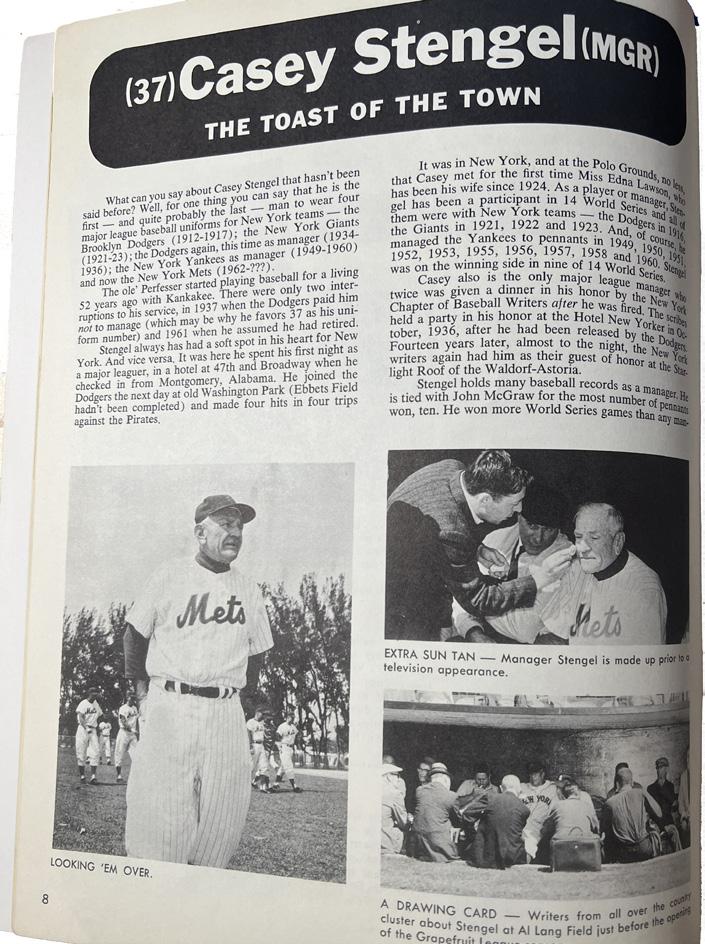
first, and Casey stopped, trotted over to speak to the first base coach and then trotted ever so slowly back into the dugout. Odd. The morning papers and Breslin would report that Marv had missed first base as well. As a baseball aficionado, I must confess that this is a difficult feat to achieve. It also begs the question, what if Marv’s blast had been to dead center and rolled 500 feet to the stairway that led to the players’ dressing rooms in center field – also in the field of play. Marv would have had an opportunity to round third and head for home!
No doubt in my mind: Marv would have missed third too. But the real issue is this: assuming there was no
(continued on page 6)






One of the great TV shows was Public TV's Cosmos. Originally broadcast in the 1980's, produced by scientist, astronomer and writer Carl Sagan, younger people know the successor shows, Cosmos—A Personal Voyage and Cosmos—A Spacetime Odyssey, both created by Neil deGrasse Tyson, a Sagan devotee and astrophysicist, author and science communicator in his own right.
Sagan is described in Wikipedia as a "scientific skeptic." I never heard that term before, but after reading the definition, I think I must be one as well: "Scientific skeptics maintain that empirical investigation of reality leads to the most reliable empirical knowledge, and suggest that the scientific method is best suited to verifying results.
Scientific skeptics attempt to evaluate claims based on verifiability and falsifiability; they discourage accepting claims which rely on faith or anecdotal evidence."
To me this is an apt description of a good journalist, looking for facts and then verifying them.
In his book "Demon Haunted World" written a year before his early death in 1996, Sagan wrote:
I have a foreboding of an America in my children’s or grandchildren’s time — when the United States is a service and information economy; when nearly all the manufacturing industries have slipped away to other countries; when awesome technological powers are in the hands of a very few,
and no one representing the public interest can even grasp the issues; when the people have lost the ability to set their own agendas or knowledgeably question those in authority; when, clutching our crystals and nervously consulting our horoscopes, our critical faculties in decline, unable to distinguish between what feels good and what’s true, we slide, almost without noticing, back into superstition and darkness…
"What Sagan was worried about was a return to an unenlightened world. I often do think that we are in some future's dark ages."
It's almost twenty years later and I'm not seeing anything there that doesn't ring true. One place to start could be
the number of Americans in 2003 who believed that Saddam Hussein was involved in the World Trade Center attacks. It's not something I ever gave credence to, but 70% of Americans were sure of it. A lot of innocent Iraqis died as a result. According to the Washington Institute of International and Public Affairs at Brown University, that number is likely more than 300,000. Those people are not coming back.
Another place could be something that a friend told me back in the 1990's. He lives in Lancaster, Pennsylvania, where we both went to college. His father was a card carrying socialist who worked in a staple factory. He told me that when he would go to family get-togethers, he could not hold any meaningful conversations because almost everyone was a devout listener of Rush Limbaugh. Anything counter to what Rush said was not countenanced, even to the point of a discussion. So while he could talk about family and friends, most everything else was met with "Well, that's not what Rush says. Are you going against Rush?" So he shut up. Something very similar to that happened to me around that same time.
I was running my mailing company from a print shop on Flatbush Avenue, and once a week a Hasidic Jew would come around with his younger brother asking if I were a Jew. After I while I told him yes, and from then on he became determined to get me to put on some kind of religious paraphernalia and pray right there at the counter.

I resisted that for many months, but I did find him very interesting to talk to about all sorts of things. But when the subject turned to something that could be in the Bible, like earth's history, he would tell me what the Bible says, insisting that since God wrote the Bible, how could anything else be possibly true.
A conversation ender.
During the Obama administration, I was told by someone who, in most all other respects was someone just like me, except younger, that Obama was the Antichrist. For him that was a given. Then, a few years later, just after Trump won the presidency, I was in Tennessee and was curious to find out the kind of people who voted for him. I started to ask a guy behind the counter at the motel, and he immediately told me to lower my voice as he looked around. Then he told me that it was dangerous to say anything negative about Trump in the state. Then there's QAnon.
What Sagan was worried about was a return to an unenlightened world. I often do think that we are in some future's dark ages.
What is most worrying to me though, is that I find little difference between people on one end of the spectrum who believe Obama is the Antichrist, and people on the other who believe Trump is the devil (some people, otherwise seemingly progressive, told me Hillary was the devil.)
My suggestion in all of this is to live true to your beliefs, while always remaining open to facts.



Last month I mentioned original research that I presented at Apimondia, a non-governmental organization that brings together thousands of beekeepers, scientists, apitherapy professionals, honey-traders, agents for development, legislators, economists, beekeeping equipment manufacturers, students, and more. Their main objective is to facilitate the exchange of honey bee related information via presentations, discussions, workshops, networking, and an amazing poster session. Apimondia is held in a different country each year. When I presented my research, it was held in Montreal Canada, with over 6,000 people in attendance from all over the world. It was amazing!
I found the results of my research to be very interesting, and thankfully, so do the folks running the Resilient Long Island Symposium, which took place from March 7-9 at three locations in and around Hofstra University. At Apimondia I was a speaker, but at the Long Island Symposium I presented via a poster session with over 20 other presenters at the Suffolk County Environmental Center in Islip. Starting at 5:30pm, local researchers and professionals offered their research via “lightning poster presentations.” Next, Jeremy Dennis, a local artist, author, and founder of Ma’s House on the Shinnecock Indian Reservation in Southampton, led an informative talk.
As got there early and spent the day wandering the grounds. The 70-acre facility is a nature center located on the Scully Estate and is adjacent to the Seatuck National Wildlife Refuge and a public beach. There are trails and boardwalks meandering through an extensive salt marsh, freshwater wetlands, and a mature upland forest. The grounds are open every day from 8:30 am until dusk, while the building, which houses exhibits, displays, and a nature library, is open Monday through Friday from 10-4.
The posters were on display during the main conference at Hofstra University on the 8th. My poster explains and expands upon the abstract I presented at Apimondia. Entitled, “What Do Honey Bees Eat? A Quantitative Melissopalynological Study to Determine Honey Bee Foraging Preferences and Influence Local Landscape Decisions”, the research basically helped me to determine what honey bees forage upon here on the east end of Long
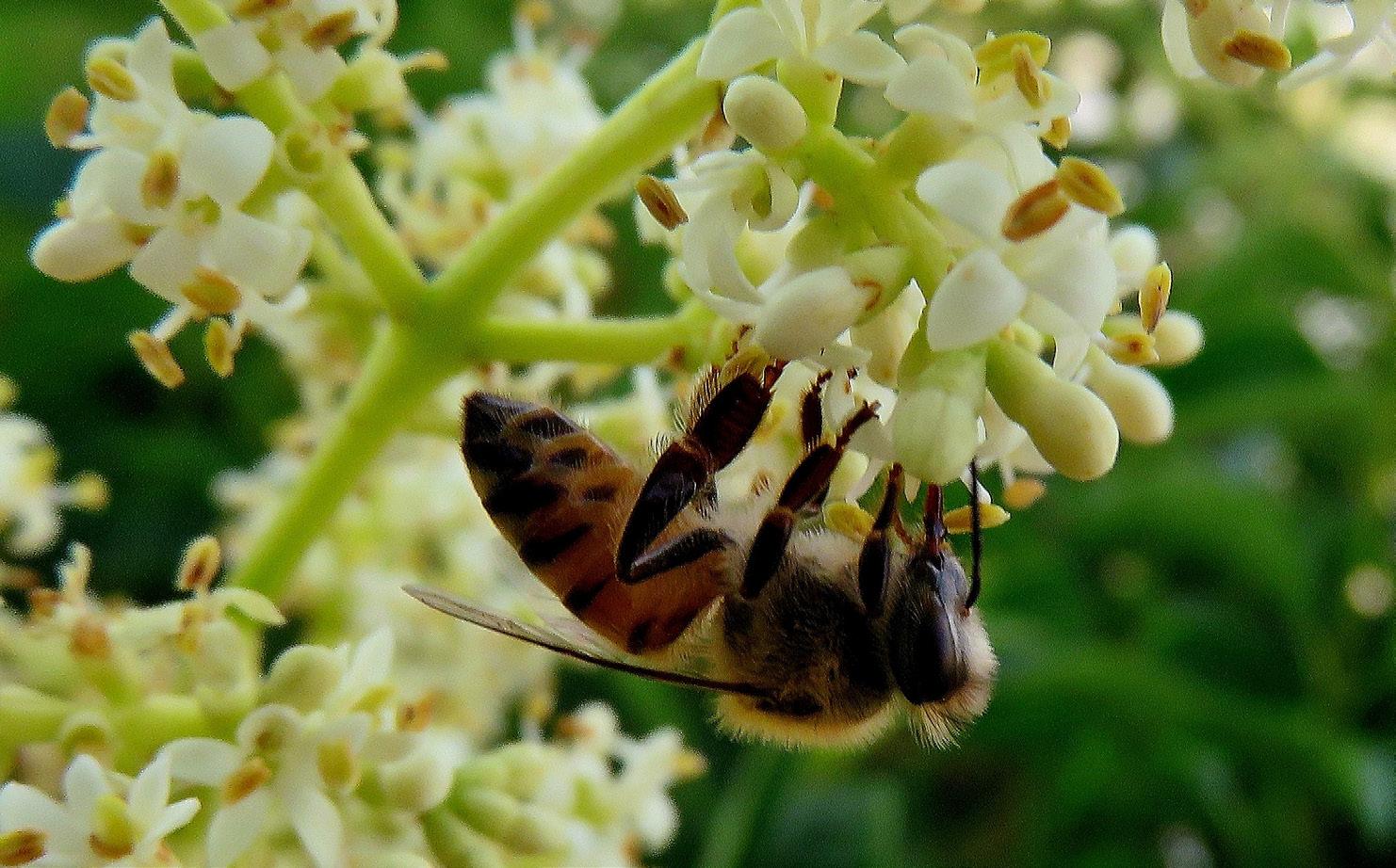
Island, and how I could (hopefully) use this information to figure out how to help them.
Did you know that honey bees (Apis mellifera) were introduced to America in 1622, and by the 1950s expanded to almost six-million colonies? Since the 1950s, colonies have declined, with recent annual losses of 50% or more.
The worst year for United States honey bee colony survival occurred over the 2020 to 2021 season, when 50.8% of our colonies died. The second deadliest year on record for U.S. honeybees occurred in 2022, with an estimated 48.2% loss. Today, less than 3 million colonies provide $24 billion in annual pollination services to America, and are vital to plant reproduction, biodiversity, and agriculture. In addition, about a quarter of a million, or 75% of the world’s flowering plants, including more than 100 commercial food crops, are pollinated by honey bees.
Technically, honey bees are important if you eat food, or if you know someone who eats food, or you know of any animals (who you eat or don’t eat) who also eat food. They are also kind of important if you like to breathe oxygen. Plants need bees to reproduce, and plants make oxygen. Less bees, less oxygen. Plants also help stop erosion and landslides. More bees, less landslides! My favorite thing that bees and plants do is make flowers, and flowers are pretty, so if we had more bees, we’d have more pretty flowers. Honey bees are so valuable, that the Earthwatch Institute declared them to be the most important species on the planet; a determination reached after the last meeting of the Royal Geographical Society of London. These are some of
the reasons why I love bees so much, and hopefully you do too.
Many factors are killing US honey bees, with malnutrition, caused by a lack of forage, being a top stressor. Malnutrition can cause immune dysfunction and promote greater susceptibility to other stressors. By identifying nectariferous species (plants that provide nectar to honey bees) that honey bees prefer to forage upon, landscape practices can be developed to offer honey bees greater food diversity and abundance. Increasing the quantity and quality of honey bee forage can help reduce nutritional stress and may increase honey bee survival.
In order to understand what honey bees prefer to forage upon, 28 samples of honey were collected over a three-year period and sent to the Palynology Research Laboratory at Texas A&M University for pollen analysis. By the way, melissopalynological, (the huge word in my abstract title) is derived from “melisso” (which means bee in Greek) with “palynology” (which means the study of pollen). Essentially, melissopalynology is the science of examining pollen grains found in honey to determine the botanical and /or geographical origin of honey. The study area contained 19 apiaries located in an 80 square-mile area from Montauk to Stony Brook, on eastern Long Island.
The laboratory isolated and identified the pollen grains in the honey samples, establishing the pollen spectra and percentage of each taxon. Sixtyeight taxa were identified, and one was unidentified. The top six species which occurred most often and in the highest percentages of all the honey sampled included Ligustrum(privet),
Trifolium/Melilotus(clover), Rhus/Toxicodendron(sumac/ poison ivy), Ilex(holly), Cephalanthus(buttonbush), and species in the rose family. This research supports the widely accepted theory that honey bees prefer to forage upon hedges and trees.
One tree can provide as much forage as an entire acre of wildflowers, so if you want to help honey bees, plant some flowering trees. You can even plant fruit trees and get some food for yourself! Trees are easier to plant and maintain than an acre of flowers too. About one-thousand honey bees need to visit two-million flowers to make just one pound of honey. That’s a lot of flowers! Each bee makes
"The worst year for United States honey bee colony survival occurred over the 2020 to 2021 season, when 50.8% of our colonies died. The second deadliest year on record for U.S. honeybees occurred in 2022, with an estimated 48.2% loss."
about 1/12 of a teaspoon honey in their entire life, which is only about 6 weeks. They don’t become forragers until they are about a month old, so in just 2 short weeks, 1000 bees work together to make one pound of honey. But I digress.
Don’t get me wrong, fields of flowers are good too. They are great, actually, but you (and the bees) do get the biggest bang for the buck with trees, and bushes too. Honey bees prefer small, white, yellow, blue, or purple flowers, whether on trees, bushes or otherwise. The Pollinator Partnership puts out a regional planting guide with very useful information . It is available free online here https://pollinator.org/PDFs/EasternBroadleaf.Oceanic.rx18.pdf .
Speaking of honey bee preferences, in my research, we discovered that
one particular pollen was found in every one of the 28 honey samples analyzed. Can you guess what it is? Don’t peek, try to guess. From Montauk to Stony Brook, over an 80+ square mile area, what pollen do you think we found in every honey sample? Some samples contained about 5% of this pollen while others had 78% of this pollen. Have you guessed? It’s PRIVET!
Every honey sample contained privet pollen. Privet has beautiful small white flowers, and the honey bees obviously love it! The honey that the bees make with privet is smooth, sweet, and delicious! Butterflies and other insects like it too. Birds eat the berries that are made after the flowers are done blooming, and the flowers are beautiful and fragrant. I was wondering how I could use this information to help honey bees, (besides planting more privet). I came up with; “Don’t sheer the privet until it’s done blooming.” Simple. Rather than prune the privet on a specific date that is suitable to the landowner, it is far better to wait until the bloom is spent. Sheer it according to nature. Wait until the privet is finished blooming! By not pruning privet until after it blooms, you can offer honey bees and other pollinators a valuable source of nutrition! Let the bees, birds, and butterflies have a feast and sheer the privet when the bloom is spent.
The results of my research showed that honey bees preferred to forage on trees and hedges. Planting them will provide greater food density for honey bees and other pollinators. There are more flowers within a relatively small area on blooming trees compared with flower meadows, and trees and shrubs are an economical and simple alternative to flower plantings. In addition, it was also shown that honey bees prefer clover, with clover pollen being found in varying amounts in 26 out of 28 honey samples analyzed. Planting clover will not only provide forage for honey bees and other pollinators, but it also naturally increases nitrogen levels in the soil.
To sum up, 68 distinct taxa of pollen was identified in the 28 samples of honey that were tested, thus deter-

mining honey bee forage preference in the study area. This type of study can be replicated in any area to determine the forage preferences of honey bees. With that information, folks can plant accordingly and/or change their landscape management practices to increase forage in order to help feed the bees.
Additionally, since pollen analysis of honey can (and is) widely used to identify the geographic origin of honey, this study (with additional research) will be utilized to identify regional honey launderers. How about that? As you may ( or may not) know, numerous companies throughout Long Island (and all across the world!) launder honey. Offenders claim to manage the bees who make the honey that they sell. They share a compelling story, with products available in many establishments. They may manage a few colonies (or none at all) but do not own the number of colonies necessary to produce the volume of honey that they put on the market.
Pollen identification in honey is a useful tool in identifying the geographical location where honey was produced, and can help (real) beekeepers weed out the local frauds. Over the coming year, area honey samples will be collected and sent for DNA analysis so as to compile a larger database of what types of pollen Long Island honey typically contains. Then we will buy the mislabeled honey and send it out for analysis as well. With science, I will only have to show the results, as they will speak for themselves. Then we can see what the fraudsters have to say. I wonder how they will explain that! (If you are a beekeeper and would like to participate I nthe tudy, give me a buzz.)

Speaking of pollen, I saw my bees bringing it in for the first time this year just a few days ago! Pollen is the main source of protein for honey bees, and it also provides fats/lipids, minerals, and vitamins. When you see the bees bringing in pollen it means a few things. One is that there is pollen available in the environment for the bees to collect. They need the pollen to rear brood, as the adult bees feed it to the larval bees, and the adult bees must consume pollen within a few days of emerging from their cells in order for their glands to properly develop in their cute fuzzy little bodies. Also, when you see the bees bringing in pollen, it is a very good sign that the queen is alive and laying, making a new generation of honey bees. I was so happy to see them bringing it in! At this time of year there is very lit-
tle nectar available for the bees, as our main nectar flow typically occurs from mid-May through midJuly. This is why it is imperative for beekeepers to check their bees food supply now and feed them if they are running low. There’s a long way to go before our nectar flow starts. Even so, the colonies are quickly increasing in size and swarm season will be here before you know it. Please check back next month for everything you need to know about swarming. And if you do spot a honey bee swarm, call a bee keeper not a bee killer. It’s a very good thing to do, and here in Suffolk County, it’s the law! Until then, I hope you stay warm and well.


(continued from page 1)
play at the plate because Lou Brock had gotten lost under the stairs, and Marv came in standing up, would he have missed stepping on home plate?
The mind boggles. Some accounts of this game claim that when Charlie Neal hit the next pitch for a home run, Stengel ran out of the dugout and pointed to each bag as Charlie circled them, showing Marv how it’s done.
But I don’t recall seeing this since everyone in the 100 rows in front of us stood to cheer Neal’s homer and blocked our view. It really was a lousy ballpark for sight lines.
The second memorable game occurred a year later, on June 23, 1963, against the Philadelphia Phillies. The Mets were already mired deep in last place playing out the schedule. But in a possible attempt to add some personality to the team after banishing Marvelous Marv to the minors a month before – from whence he never returned – the Mets bought Jimmy Piersall from the Washington Senators. Jimmy was semi-famous for freaking out as a young player with the Boston Red Sox in 1952, which led in short order to a hospitalization, a comeback, some more whacky behavior, an autobiography and a 1957 movie, Fear Strikes Out, starring Anthony Perkins in a prePsycho warm-up.
Jimmy and Casey figured to make some zany music together. After all, back when Stengel managed the Brooklyn Dodgers in the 1930’s, an ump refused to call a game because of darkness, so Casey signaled from the mound to the bullpen for a new pitcher with a flashlight and promptly got booted.
Jimmy was a great outfielder – Ted Williams called him the best he ever played with – but Piersall’s mood swings got him ejected quite often.
Perhaps the most famous pre-Polo Grounds moment came during a game against the Red Sox after Jimmy had been traded to the Cleveland Indians. Piersall was playing center field when his old pal Ted Williams came to bat. Piersall proceeded to sprint back and forth in the outfield, waving his arms like a windmill, trying to distract Williams, who stepped out of the box. The umps warned Piersall to stop running around but he refused and was given the heave-ho. Piersall felt this was unjust and had to be restrained from going after the umpires by his teammates.
So now here was Piersall playing for
the worst team in major league history. As Casey used to say, “you could look it up.” In their first two seasons, the Mets lost a combined total of 230 games, setting individual and team records for futility which likely will never be equaled. Rather than sulk, Jimmy knew exactly what to do in this new environment: have some harmless fun. Take for instance, an exhibition game at Yankee Stadium, the long-discontinued “Mayor’s Trophy Game.”
Piersall was playing centerfield in the first inning and as Mickey Mantle was announced as the next batter, Jimmy wildly retreated to the monuments, 450 feet from home plate. He stood there, amid three concrete slabs, bas reliefs of Babe Ruth, Lou Gehrig and Miller Huggins, all as tall as Jimmy. Then when Mantle stepped into the batter’s box, Piersall crouched behind the monuments, peering out between Ruth and Gehrig to home plate, where Mantle, now seeing Piersall pounding his mitt behind the stones, began to laugh and stepped out.
I have never read an account of this hilarity (I laugh even now, remembering it), but since I was sitting in the upper deck on that night, an entire section to myself, let me take this opportunity to say, Thank you, Jimmy for giving me a memory I’ll never forget unless, you know, dementia and such.
As the game wore on and Met pitcher after Met pitcher was summoned from the bullpen in the valley that separated the left field stands from the bleachers, Piersall would sit on the base of those monuments and gaze into the stands, seemingly as bored as the rest of us. As it turned out, this episode was just a warm-up…
Just a few days later my brothers and I went to see the Mets play the Phillies at the Polo Grounds. Another beautiful Sunday in June. We sat in lousy seats in the second deck grandstands behind third base. Given the upper deck overhang, it was impossible to see where any ball hit in the air was going. So when Piersall hit a fly ball to left field, we watched the outfielder for the Phillies move back toward the wall. Then we saw him stop and look up. At the same time we noticed the third base umpire running down the line waving his right arm in a circle above his head, the universal baseball sign for a home run. We then turned our attention to Piersall.
Jimmy had just finished rounding first base but now he momentarily paused, turned, and proceeded to trot backward toward second. Unlike Marvelous Marv, Piersall managed to step on second and as he rounded third fac-
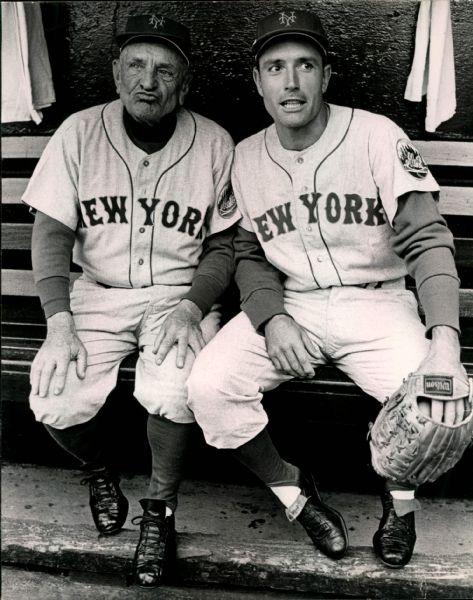
ing backward, he reached out to shake the hand of the stunned third base coach who was barely able to grab it. Finally, peering over his shoulder, Jimmy spied home and stepped on it, whereupon he resumed a forwardlooking orientation and trotted back to the Mets dugout. There were about 20,000 of us in attendance that day and we were all laughing. But Piersall was gone in a week, traded to the Anaheim Angels. Apparently Stengel felt there was room for only one clown on the team. Piersall had the last laugh, though, enjoying five productive years with the Angels, a much better team.
My favorite Piersall anecdote involves Yogi Berra. A wild Yankee pitcher had just hit two Red Sox batters and as Jimmy stepped to the plate, he smiled at Yogi and said, “If you knock me down, I’m going to get up and hit you across the head with this baseball bat – and I’m the only guy who can plead temporary insanity and get away with it.” To which Yogi deadpanned, “Jimmy, we haven’t knocked down a .230 hitter all year.”
The 1962 Mets shortstop, Elio Chacon, had a history of near collisions with outfielders. Richie Ashburn, a Hall
of Famer playing his last year on the worst team in recorded history realized that Chacon didn’t understand the English warning: “I got it”. So Ashburn went to a bilingual Mets player and was told that Chacon would understand the warning in Spanish, Yo lo tengo (“I have it”). Soon thereafter a short fly ball was lofted to center field and a back-pedaling Chacon, hearing Ashburn shout YO LO TENGO!!! veered away. Whereupon, the Mets English-only left-fielder Frank Thomas completely flattened Ashburn. While leaning over the injured Ashburn, splayed across the Polo Grounds grass like a rag doll, Thomas, who stood 6’3” and weighed 40 pounds more than Ashburn, asked him: “What’s a Yellow Tango?”
Richie Ashburn was the Mets’ Most Valuable Player in 1962, with a batting average of .306. Ashburn commented years later: “To be voted the MVP on the worst team in the history of baseball is a dubious honor for sure. I was awarded a 24-foot boat equipped with a galley and sleeping facilities for six. After the season had ended, I docked the boat in Ocean City, New Jersey, and it sank.”
“To be voted the MVP on the worst team in the history of baseball is a dubious honor for sure. I was awarded a 24-foot boat equipped with a galley and sleeping facilities for six.
After the season had ended, I docked the boat in Ocean City, New Jersey, and it sank.”

The planet of communication, Mercury, is prominent for everyone this month. It moves from Pisces into Aries on March 9th for a little more than two months and will go retrograde in Aries toward the end of March. However, we will feel it slowing down by March 15th. For some, the mind and the mood is out of sync. For others an outlet for this tension through social interaction will appear. Yet many will feel rebellious and want to break out of relationships and perhaps spend money on a cause. Also prominent is Venus moving into her home of Pisces on March 11th followed by Mars about ten days later. Uranus will make angles to both causing disruptions before and after the ingress into Pisces. Expected the unexpected. The Astrological New Year begins with the Spring Equinox on the evening of March 19th. The planets inform us but they do not compel us.
Saturn and Neptune continue their heavy, sometimes confusing, discussions in Pisces while we try to figure out the abundance of unknowns swirling around in the waters of our sea lanes. For those who make their living through ocean based activities, the New Moon on March 10th triggers new information. How will the ocean you work with be structured and changed? Do not sail ahead with a compass heading not previously vetted and thought out well. You could hit a fog bank of misinformation because of decisions originally made in foggy conditions. Recently, the government restricted your ability to earn money by reducing the resources you have access to. More restrictions are coming. Working creatively is the answer to make headway in order to regain or mitigate unfair situations. Think about using the resource to justify legitimate positions. Pisces works best when love is a part of the plan. Mars in Pisces loves to sever or cut, think surprise attack as the sudden change planet Uranus hangs around nearby. Unexpected submarine attacks are possible in areas at war to escalate conflict.
Aries - You can experience the beginning of an energetic overload as first Mercury on March 9th, then Venus on March 11th and then the Sun on March 19th move into your sign. Mercury will spend more than two months including its retrograde in Aries. Hot words and an unusual Presidential Election seem justified towards the end of this month when Aries dives in to take action as is Aries nature. The rhetoric will ramp up in personal lives as well. Be careful
not to tip over or violently stir hot pots. The motto is go, ready, set.
Taurus - The threat to the planet from earthquakes, tsunamis, volcano eruptions and extreme weather events continues to exist. These events were well noted in other parts of the world and here in the US in the past two years as well. Spring doubles up on these threats. If you are in areas or planning trips to areas known for eruptions or shaking of the earth be aware. Uranus and Jupiter brings sudden larger than normal events to our own personal lives as well as our planet. Notice where the sign of Taurus appears in your chart for clues to how this will manifest unexpectedly for you.
Gemini - On May 25th Jupiter will move into you sign. It is time to begin to think about how that will manifest in your life. Some part of you will grow bigger and you will experience a larger presence beginning in your birthday month of May. Your natal chart will provide more insight about how this will manifest for you. If you need for information on your chart contact me.
Cancer - It is time to start thinking about your home again. Not that you ever really stop trying to protect and enhance your inner sanctum. But now the things you were considering are appropriate to implement. Aim for the end of March for full installation of any safety devices first.
Leo - You will be better soon. The days are longer now. The Sun, the ruler of your sign, moves toward us. Go out stand on the earth. Take your shoes off. Get up before sunrise and welcome the Sun. Lead a meditation group on Sunday, which is your day, to project love and counter the hate, war and misery around the
world. Meet friends at your nearby beach at three pm. Leo you got this!
Virgo - You are so good at keeping track of the details and putting things in order. Do not overlook the basic needs in life that are becoming a major issue for many in the world and a growing problem for many here in the US. We are short of food especially among certain groups of humans. In our own lives it would be wise to grow sprouts and other microgreens in a container where we have enough sunlight. This provides exceptional nutrition and create a buffer against food shortages. Perhaps you might lead in this area. You are the earth goddess that we need.
Libra - Remember the Eclipse of October 6th-7th of 2023? This was the eclipse when Hamas emerged to murder Israeli citizens. It began the war that still kills innocents in Gaza. Billions of US dollars in weapons and aid have flowed offshore in the effort to end the slaughter. This month a Lunar Eclipse in your sign will refer us back to that October Eclipse. What was going on in your life then? This March Eclipse will be the continuing story. We can only hope that an ending of suffering occurs with this eclipse however with Mars conjunct Mercury the fear is it will blow up the conflict further. In your own lives you have more control. You may choose love over hate. However beware this eclipse season since it begins mid-month and builds.
Scorpio - Mars calls Scorpio its home. During the Libra Eclipse on March 25 there might be a dramatic end to whatever was going on in your life during the Eclipse October 6th & 7th. During this period you might also realize the things that began then may come into being now.
Sagittarius - Jupiter is at home in Sagittarius. Expansion associated with Jupiter will be restricted by an opposition between your sign and the placement of Jupiter in Taurus. Sagittarian fire will try to spread the flames of fun around but heat gets extinguished before the fire is ignited. Wait until next month when the Sun is in Aries and the heat is easily available.
Capricorn - With your sign slow and steady wins the race. This month focus on money and how to make
more. You are very qualified to take more on at work or add another job. It will pay off and you will be happy to have the extra cash when you need it, No burn out please
Aquarius - The month begins with a rough start. Venus and Mars are talking about the future but emotions are running high. This will be a deep discussion and transformational ideas will suddenly come up. Sudden events could also interfere with the plans you made and now have to change. As March proceeds and the emotions calm you may be able to reconcile the needs with the wants.
If we spend only fifteen minutes every Sunday afternoon at three pm letting love fill our hearts we can change the path we are on. I hope as many of us as possible can join this movement to project love to the world. Like many in our watery east end world, my healing place is at the beach. So see you there.
If you know your rising sign or where the moon falls in your natal chart, you should read the forecast for that sign also. If you do not know your birth chart and want to know about the promise of your
Natal Chart, I can be contacted at jevansmtk@gmail.com. I am giving one free reading away to the first person who contacts me. Please add the words March Star Revue Reading in the subject line. Look up, the stars are all around us!
Copyright Julie Evans 2024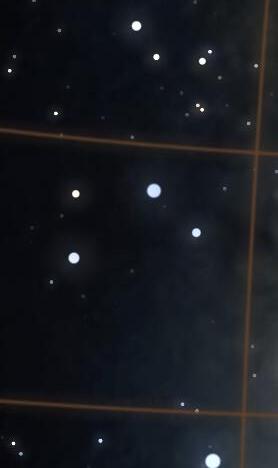
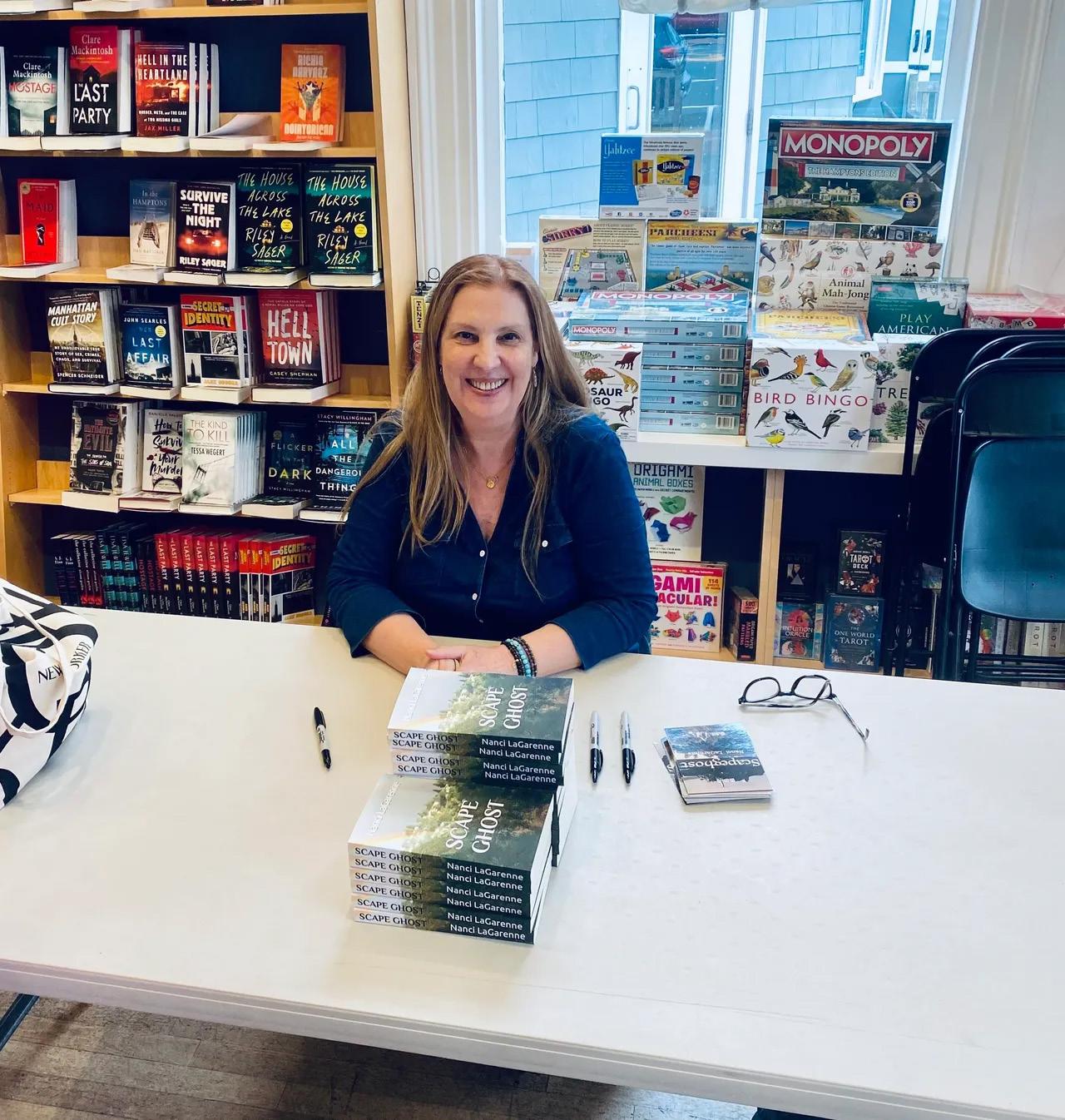
Nanci LaGarenne’s fourth novel, Scape Goat, is an ambitious historical novel starring one of the famed Alcatraz prison escapees, Frank Morris.
In LaGerenne’s world, Morris flees Alcatraz to safety, and reinvents himself as Cincinnatus Jones. The year is 1962, and Jones quickly finds an abandoned cabin nestled among California’s redwoods. Morris is a gentle soul who is happiest when he’s whittling wood into moons or painting the trees.
In his mugshot, Morris is movie star handsome in addition to having a reported above average IQ. This explains the fast moving love affair he strikes up with Patsy Vaughn, an attractive woman of Creole origins who he recognizes from Alcatraz as the prison tutor. In perhaps the most unbelievable exchange early on in the novel, Patsy finds Morris in her cabin and instead of being terrified, she invites him to stay, cooks him pork loins and promptly goes to bed with him. (I can only assume this jump is made due to the real life appeal of Frank Morris.)
In another encounter with a strange
woman that Cincinnatus rescues from a drunken haze, the yet another beautiful woman returns to the cabin, eagerly seeking sex, which Cincinnatus quickly acquiesces to, despite his burgeoning feeling for Patsy. This is where the novel earns its name, as Patsy later reveals that the woods are haunted and Cincinnatus just had sex with a ghost. This doesn’t phase Patsy as she has also had sex with a Civil War ghost. Is cheating with a ghost still cheating? This question, one I would like examined in greater depth, remains unanswered in the novel.
What follows is a rapid fire series of encounters between the narrator and many-a-ghost - ranging from John Muir, Joaquin Miller, Babe Ruth, Sylvia Plath, Miles Davis and a countless list of others, all culminating in a visit from God.
When the writing was strongest, I was, at times, reminded of Octavia Butler’s time traveling masterpiece, Kindred, or Harukai Murakami’s novel Killing Commendatore where the fantastical and magical is packaged casually as reality and readers are pulled along on a fantastical journey into other dimen-
sions. Although LaGarenne provides an interesting cadence in her writing with short staccato sentences and vivid language, the sheer volume of ghostly encounters makes for an impenetrable read. I found myself desperately seeking a longer slower scene to linger in.
LaGerenne’s interest and knowledge of history and politics is admirable, but the sheer amount of ground covered in the short novel creates a breakneck pace for readers both logistically and emotionally. In addition to the ghost plot, more is revealed about Patsy’s origins, a confusing love triangle sprinkled with incest that we learn about from yet another visiting ghost.
Since the book is written solely from Cinicinnatus’ perspective, my emotional investment in the ghosts was low. Mostly I found myself wishing LaGerenne would slow down, and luxuriate in the strong character of an escaped prisoner she has created.
The novel is most compelling when we are living inside Cincinnatus’ head as he revels in the beauty of being free, a man with a new lease on life. He is a
man who finds beauty in everything and has a strong sense of compassion. As he eloquently states, “Look at this beauty, it cannot exist if there is only bad in the world. Some just lost their way.”
Transitions are beguiling, that period when a thing is changing into something else. It’s part of nature, of course—it’s the story of the universe—and it’s essential in all the arts. The ephemeral, performing ones, especially dance and music, are all about movement and transitions through time.
Not all music is the same, obviously, and the way transitions are handled and their purpose differs by individuals and eras. The clearest way to hear this is through music that defines itself through form above all else, i. e. Western classical music. One of the satisfactions of Haydn is hearing how he lays out eight bars of an idea, repeats it, then fits in a proportional transition to a new idea: sonata form!
Form grew more personal and complex through the 19th century, reaching an end in pieces like Sibelius’ Symphony No. 7, which is in almost constant transition until the last measure, when it finds its essential meaning. But that wasn’t a modern thing, and it’s not right to think of the use of musical transitions as signifying accumulated knowledge; polyphonic vocal music of the Renaissance is also in constant transition. We’re no more complex, nor apparently wiser, then they were in Rome in the 16th century.
We hear the transitions in classical music only after the composers figured them out, in jazz we hear musicians improvising their way to and through them, improvising the trustees themselves. The essence of jazz is that it a process of creativity and exploration—improvisation, like life. And because jazz has coincided with the development of recording technology, almost every movement and revolution in Jazz has been preserved on audio. Maybe the single best example of this is the Miles Davis: Complete Live at the Plugged Nickel 1965 box set, where you can hear Miles and his second great Quintet (Wayne Shorter, Herbie Hancock, Ron Carter, Tony Williams), improvise their way out of hard bop and into a new conception of small group jazz, in real time.
The exception is arguably the single most important revolution in jazz, which was the creation of be-bop, the movement that transformed jazz from a modern popular music into a modernist art music. There are incredibly important early bop recordings like “Ko Ko,” recorded by Charlie Parker and his Quintet, November 26, 1945, but the music is established be-bop, the transition has already happened. How it came to be, the sound of that, is still mostly a mystery. Thats because from 1942-44, when Parker and Dizzy Gillespie were experimenting and creating the new style, the Musician’s Union was on a nationwide recording strike, and no one made any records. There were radio broadcasts and some transcriptions of the same, and a small number of to me recording the musicians themselves mede of jam sessions—there are famous ones made by Bob Redcross of Parker and other musicians jamming in his apartment—but the latter only amounts to a few flaking fragments left from a fresco lost to time.
There were transitional musicians too, not necessarily working the way from one idea to another but rather standing in between the two different ideas, either in an independent way, like the great pianist Art Tatum, or friendly with both but not fully inside either. That’s the case with Don Byas.
Byas was one of the great swing era tenor players. He had a warm, buttery tone, fleet fingers—his swift improvising on “I Got Rhythm” in duet with bassist Slam Stewart at Town Hall in June, 1945 is a landmark jazz recording and for a time kept listeners
aware of Byas’ existence because of its inclusion on the 6-LP Smithsonian Collection of Classic Jazz, a once coveted set released in 1973—and a way with a ballad that emphasized beauty and purity of feeling. The Don Byas: On Blue Star is an excellent introduction to the man and his art, and though out of print can be had cheap wherever used albums are bought and sold. Byas was a one man transition between swing and be-bop, and that means he was never really a be-bop player. Some well-known critics consider his playing on the “I Got Rhythm” track bop, but it isn’t. There are signs that he’s been hearing the bop players use of harmony, but he’s playing within the chords, not extending them up top, and though he’s fast he has the swing quality of hanging slightly behind the beat— the opposite of bop—and his phrasing, the way he connects and accents a series of notes, is also mostly swing with occasional touches of bop.
Byas knew bop was happening by the time he hit the Town Hall stage. On the newest archival release from Mosaic Records, Classic Don Byas Sessions 1944-1946, there are 15 tracks where Byas is playing in large and small ensembles that include Parker, Dizzy Gillespie, bassist Oscar Pettiford, and the brilliant and doomed bop baritone saxophonist Serge Chaloff, all musicians who came up playing in swing bands. All the tracks were recorded in January, 1945, and of particular interest are the final three credited to the Dizzy Gillespie Sextet, with Byas joined by tenor player Tommy Young, and pianist Clyde Hart, Pettiford, and drummer Shelly Manne. They play the be-bop staples “Good Bait,” “Salt Peanuts” (credited as “Salted Peanuts”), and “Be-Bop,” and are odd and fascinating for it.
The tracks are a friendly collision between two ideas that at the time had just started to run on parallel tracks and at different speeds. Gillespie and Pettiford are playing bop, everyone else is playing swing, included Manne who at the time was not yet the excellent bop and hard bop drummer he was to become and is awkward as hell, playing swing patterns but seeming to try and dump those and try something new with every beat. It’s something like the famous Jazz at the Philharmonic concerts when Parker appears with swing musicians, but those are jam sessions while these are arrangements meant to be pressed on singles, so the structure shines a bright light on how you’re hearing the past and future superimposed. The misfit doesn’t show a transition but the aftermath, with Gillespie, et al on one side and Byas on the other. The collection as a whole is a great tribute to a musician who may not be thought of as one of the greats, but was a great player. As Loren Schoenberg writes in the booklet, “Rarely, if ever, has the saxophone ever been played more exquisitely than in the hands of Don Byas.” Schoenberg also points out how the swing musicians created the material that was the foundation for bop, and that Parker was quoted as saying that Byas had played everything there was to play. The set show that all, how Byas set the table for Parker and his associates, and even includes a fantastic little gem, he and Stewart again playing “I Got Rhythmn,” recorded inside someone’s apartment.
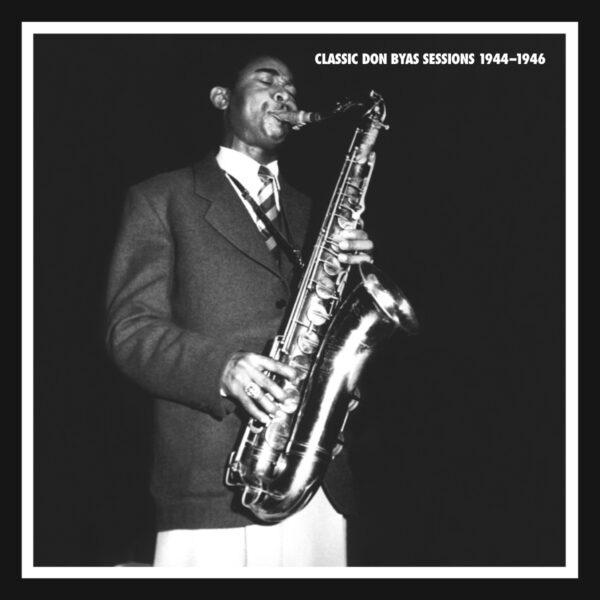
"We hear the transitions in classical music only after the composers figured them out, in jazz we hear musicians improvising their way to and through them, improvising the trustees themselves."
“Zac Wozny, a laid-back teenager who has spent his whole life in Sunset Park, enrolls in Hunter College in order to make sure he gets a draft deferment to stay out of the Vietnam War. This brings him into the strange new world of Manhattan. After a geography class that he attended stoned, he meets Susan Kemp, who invites him to the Park Avenue apartment where she lives with her parents. She offers some food:
“I don’t have much to offer you,” she called out from the bedroom. “My parents are in Europe, and I usually eat out.”
“That’s cool – I’m not hungry.”
She came out now in jeans and a red tee-shirt with STANFORD printed in white letters. “I could get you some whiskey... my father keeps some old bourbon whiskey or something.”
“Sure – that’s cool.”
She brought him a heavy cut-glass tumbler filled halfway with amber liquid, saying, “Don’t worry – this glass won’t explode,” and they laughed a little.
Dressed this way she was more familiar to Zak, except now in her red tee-shirt he noticed she was braless. None of the girls in Sunset Park would ever do that. He took a swig; it was smooth and warm.
When Miss Kemp perched on a nearby ottoman, Zak took a seat on the worn leather couch.
“So, Zak – where do you live?”
“Brooklyn.”
“Oh, Brooklyn… I was there once.”
“Okay.”
“How do you like Hunter?”
“It’s okay. Better than Vietnam.”
“You seemed so enthusiastic in class.”
He didn’t want to tell her why. Instead, he said “I’m getting into it.”
“Another drink?”
Before he could answer she began pouring. “Vietnam… what a mess. Girls are lucky, we don’t get drafted. Well, not yet.”
Zak sipped at the whiskey while Miss Kemp began talking about herself. His mind kept floating out the window to the view of the East River and hearing only some of what she was saying.
She was twenty-seven, dropped out of a bunch of colleges, under a lot of pressure to get married.
Until one word she uttered brough him back forcefully to the leather couch, Apartment 11-J, and the twenty-seven-year-old Susan Kemp, who was now kneeling on the rug in front of him.
The word was “fellate.”
And the full sentence was “Would you do me a big favor and let me fellate you?”
Now back in the room in both body and mind, he shouted, “What?! What did you just say?”
Somewhat shyly, Miss Kemp replied. “I said, would you do me a big favor and let me fellate you? It means give you a blow job.”
“I know what it means!”
After a pause, she went on. “It would help me with this guy I’m dating.”
“Help you?”
“Yes. It would be a big help.”
Zak just stared at her.
“Okay… I told you about the pressure I’m under to get married. But not to just anyone. Ken – that’s his name – is a Whitman. From Sutton Place. We’ve gone out a few times, but… I’m not as experienced as I should be, and neither is he. So if I could just practice…”
Zak cut her off. “Practice?”
“It could help seal the deal. And get my parents off my back.”
Zak kept staring. He thought he would get up and leave.
But he didn’t get up, and he didn’t leave.
Susan Kemp raised her head slowly, squinted her eyes, and said, with a touch of grit, “Pleeeeease?”
Then she took off the red Stanford tee-shirt.
hour later, Zak Wozny was standing in the plush carpeted hallway waiting for the elevator down. If it was 2019 instead of 1969, it would have been “WTF, WTF,” going through his head. But back in ’69, his mind was simply “BLOWN.” Everything he had learned about girls and sex in his seventeen years in Brooklyn had just been turned upside down. The elevator arrived, still manned by the small guy in the Sgt. Pepper suit.
Zak noticed that the sideways dirty looks he had given him on the way up had morphed into a direct nasty stare. The man slid shut the shiny brass gate, turned the crank and they started down. But the dirty look continued until Zak blurted…
“What’s your problem!”
With a weird grin on his pinkish face under the braided cap he says:
“Yer a swarthy one, ain’t cha?”
“What..what!” was all Zak could reply.
“I kin always spot a wop!”
“What! A wop!”
The elevator reached the lobby, the little guy pulled back the grate, extending an arm pointing outward.
“That’s right… a wop, a dago. Now be on your way… if you know what’s good for ya.”
Zak got off the elevator and headed down the hall, just wanting to get out
onto the street.
“That’s right… wop… on your way now.”
“Listen, you ask kissing mick piece of shit… my father’s Polish… I’m only half a wop, so FUCK YOU.”
Sgt. Pepper ran into the elevator, shut the grate, starting yelling..
“Jimmy… Jimmy!!”
Zak ran down the hall, almost into a big maintenance guy who was answering the call. Finally, out on Park Avenue, Zak screamed back one last “FUCK YOU” and began walking downtown with his mind still blown; wishing he had gotten into Brooklyn College.
Yellow, yellow, yellow cabs... were standing almost still on Park Avenue. Just walking, Zak was passing them at a good clip. The passengers, mostly solitary riders who would have made better time on foot, sat staring, in passive acceptance of the Manhattan rush hour. With traces of mescaline still running through his head, everything, just as in Geography class, seemed interesting. The green light at the corner of 53rd street, how it shimmered with traces of blue… and then became yellow, a deep amber yellow… almost like the cabs, and then RED.. and back to Green! But green means “GO” and several suits standing behind him nudged Zak gently forward. He was in the flow, going south on Park Avenue,,, to where? he wondered.
A line from a poem he was made to memorize, but never understood, came into his head:
Oh, do not ask, “What is it?”
Let us go and make our visit.
At 46th Street a brown/gray office building straddled the avenue, east to west. Getting closer, Zak saw the tall arches and a curved roadway which allowed the cabs to pass through and continue their southward crawl. Revolving doors kept the flow of suits and dresses moving, into a marble lobby and onto a descending escalator. Going down, he heard the approaching sound of a thousand echoing voices and footsteps, and at the bottom saw the ceiling rise 200 feet, becoming an indoor sky. Zak stopped and stared up. The crowd off the escalator dispersed around him, heading for trains to Norwalk and New Canaan… Greenwich and Goldens Bridge, not noticing the electric constellations of Grand Central Station.
But Zak did, the sole person standing still in the crisscrossing paths of commuters moving in myriad directions, never colliding.
That’s when he realized the city was a living organism, which breathed in people every morning, and after using eight or so hours of their energy, exhaled them back into the boroughs and suburbs from where they came. The remaining traces of mescaline were putting voices and theories in his
head. Looking around at the crowd rushing by, a sudden wave of paranoia came over him, a sudden knot of fear in his stomach. He was too high… beer, need beer.
Zak found an opening between the suits and waited to be noticed. When the short pink faced man behind the bar finally came over, Zak gasped internally. “It’s him!” The elevator guy who called him ‘swarthy,’ how the fuck did he get here?
The man laid a coaster down and said pleasantly, “What’ll it be, young man?”
It wasn’t him, similar looks, just some mescaline distortion.
“Beer, please.”
“And you’ll be eighteen now, ain’t cha?”
“Oh yeah, sure.” (well, he would be, in two weeks)
“Sure you are, how ‘bout a cold Budweiser?”
“Yeah, great.”
He pulled a long necked bottle from ice under the bar, opened it. “Glass?” “No, bottle’s good.”
Zak put a five on the bar, got back two, left one. Went to the railing where he could look out over the swarm, chugged half the bottle and felt better instantly.
“What a fuckin’ day,” he thought. Miss Kemp, exploding glass of milk, a blow job – his first, though he didn’t tell her. The elevator guy! Swarthy! What the fuck is that, like some pirate shit?
Zak would look it up later. He finished the bud, got another one. Beer is ballast, brings you back down to earth. Mikey Bergen from 41st Street, who would never take any drugs, always said “I drink beer — at least I know I’ll wake up in the morning.”
After his third Budweiser, Zak’s knot of fear had dissipated. From the balcony he watched the rush hour crowd diminish. Exhaled by the City… to whence they came. The blue-skied ceiling darkened slightly and the electric constellations seemed to brighten. Strange day, he had a feeling there’s be more to come.
Author Bob Racioppo is a founding member of the Shirts, a New York-based American punk band that was one of the seminal CBGB bands. After signing a record deal they toured the US and Europe. In addition to music, Robert is an accomplished fine artist. This is his first novel.
He grew up in Sunset Park and now lives in Windsor Terrace. To order a copy of the full book ($15) text 917 652-9128 with your address.

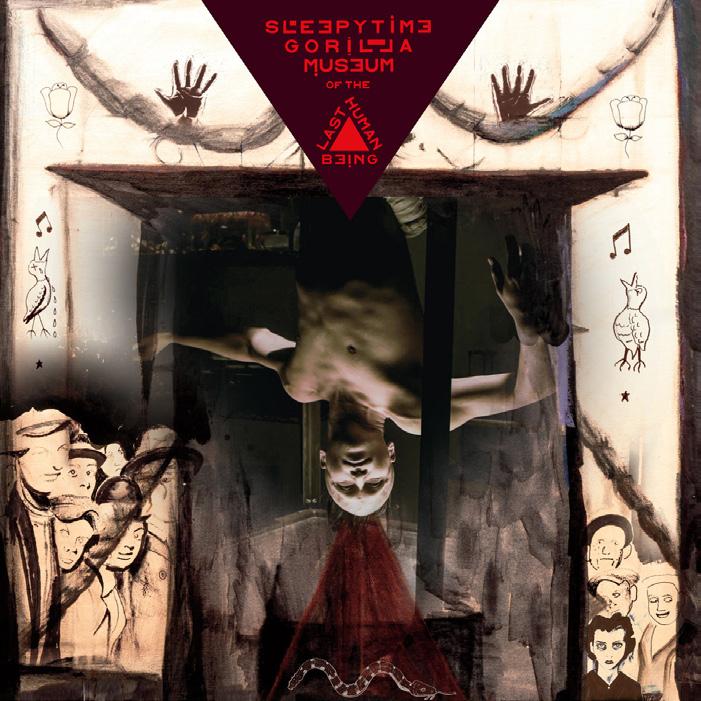
Sleep and other horrors. I don’t know what goes on within the Sleepytime Gorilla Museum after hours, and truth be told, I don’t always understand what’s happening during public viewings, either. Past exhibits have focused on Ted Kaczynski, pulmonary tuberculosis, pediatrics, cicadas and cockroaches. It’s been 17 years since their last offering, In Glorious Times and during that time they’ve been gestating, hibernating, or whatever it is they do when they’re doing what they do. Glorious times, though, are here again, because the primo prog-goth-metalart-smart and unlike anyone else Oakland, CA, cabaret outfit is back and the fruit of their sabbatical is a remarkable new record, Of the Last Human Being (CD, double LP and download out last month from Avant Night). If the previous three albums—plus a 2003 live album that was altogether its own oddity—were displays, Last Human Being is an invitation to observe. With singer/ guitarist Nils Frykdahl’s gentle falsetto and fearsome growl, they’re capable of full throttle rock and, adding violinist Carla Kihstedt’s fragile soprano, something akin to metallic madrigals. There’s some pounding cuts here, of course— “The Gift” and, especially, “Burn Into Light”—and a couple of gently quirky songs from Kihlstedt—“Silverfish” and “Hush, Hush”—(plus cinematic videos for both “Light” and “Hush). There’s a bit of comedy concerning the titular last human in the scientific plea of “We Must Know More” and more concerns about extinction in bassist Dan Rathbun’s “Old Grey Heron.” There’s even a cover, a new recording of This Heat’s “S.P.Q.R.” (which they previously did on a 4-way split 7” with The Ex, Voodoo Muzak and Cheer-Accident). All of these and other songs are reasons for celebration and revelry, but interspersed among them are private court dances and rituals, instrumentals that make the album its own full and vibrant, dark and wonderful world. The last time Sleepytime toured, it was under the concern, or at least the acknowledgment, of the demise of humanity, and a long discussed film of the Last Hu-
man Being is, apparently, now nearing completion. There ain’t no party like an extinction rebellion party.
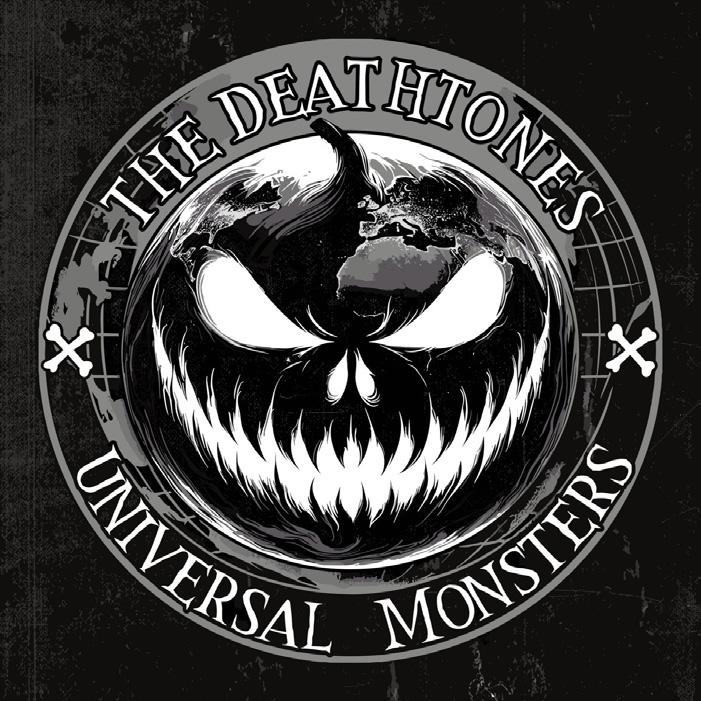
Sleepytime has always grafted bits of humor and cabaret into the act, and the best horror usually employs some element of showmanship. The Universal Monsters reboot of classic creepshows has gotten off to a prolonged and stumbling start but apparently isn’t dead yet. But over in Milford, PA, the Deathtones have been paying tribute to classic horror for the last couple of years. Convened as a side project of pop-punk band RadioRiot!, the horror lovers have released a couple dozen singles and EPs over the last couple of years—kneeling before Stephen King and paying homage to the Friday the 13th and Leprechaun franchises—some of which were collected on last year’s The American Invasion. Their Universal Monsters, out last month on We Are Horror Records (CD and digital), contains a half dozen songs retelling some of the greatest scary stories ever put on screen. Count Dracula, Frankenstein’s Monster, the Mummy, the Invisible Man the Wolf Man and the Creature From the Black Lagoon are all given sympathetic treatment against slightly cartoonish goth-metal soundtracks, over and done in under half an hour and all lovingly silly, just like the movies that inspired the songs.
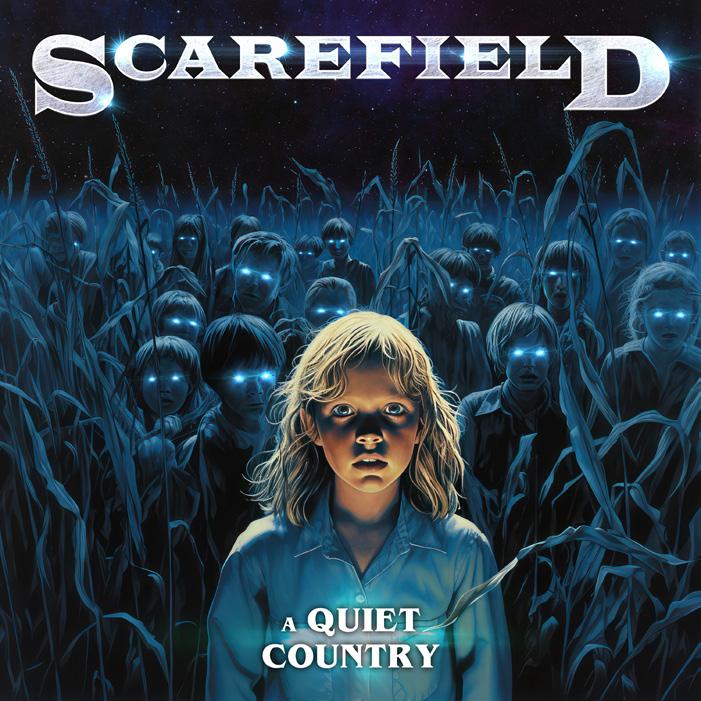
Quiet Country, which they self-released on CD, LP and digitally last month. The pair (Italian multi-instrumentalist Simone Manuli and Swedish singer Markus Kristoffersson) inform their New Wave of British Heavy Metal melodicism with references to John Carpenter, Wes Craven, HP Lovecraft, Plato, Planet of the Apes, Greek mythology and even reality: “Altar of Fear” was inspired by Kristoffersson happening on an outdoor, Satanic ritual as a kid and waxes philosophical with Mr. Bungle lilt: “Every species can smell its own extinction / We’ll never know the nature of creation / It’s inhuman, it’s not a jurisdiction / home is lost, reality isn’t fiction.” With stacked guitars, machine-gun drums and multi-tracked riffage, Manuli builds a big enough sound to induce thrash metal flashback.
Truth be told, though, the ’80s might not be the firmest of ground to build on. Nashville’s Aaron Lee Tasjan, however, isn’t looking to put fear in anyone’s heart. His “Horror of it All,” from the forthcoming Stellar Evolution (due next month from Blue Élan) sounds closer to Don Henley or maybe a lost, latter-day Cars song but the video captures the era’s schlock teen cinema perfectly, even down to the VHS-dub faded colors. The decade was half over before he was both—’80s nostalgia might be strongest among those who didn’t have to live through it the first time—but he hits that questionable nail on the head.

Thrashing and bashing doesn’t always have to be so serious. Out of the depths of Texas comes Kólga, who claim territorial rights to blackened surf rock with their debut Black Tides (CD, LP and download out March 29 via Otitis Media Records), which rips through seven tunes in under half an hour with simple, grooving themes filled out by theremin, synth, waterphone, lots of percussion and lots of banging. It’s essentially an instrumental album (grumbles and howls are partially
submerged under the tide) and a right clever gimmick, but it’s more than that. While Ventures-adjacent riffs dominate, the band (made up of members of Dead To A Dying World, Spazm 151, Akkolyte, Cleric, Tyrannosorceress, Damage Case, Sabbath Assembly, Wrekmeister Harmonies and Unconscious Collective) brings knowledge to the beach. There’s moments of shrutitinged sci-fi, some straight scorching melodic death metal and even (to these non-surfing ears) some early Alice Cooper influence. Summer will be here sooner than you know it, and Kólga will be here to destroy it. Read the
